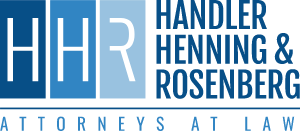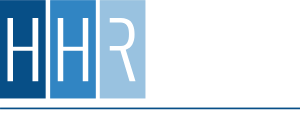If you bring a lawsuit against an at-fault party after a Pennsylvania car accident or truck accident, you have to prove the other side was negligent. Basically, this means that you (and your lawyer) must provide evidence that shows the other party acted unreasonably under the circumstances, and their bad behavior caused the accident. You must also show that their negligence caused damage to you in terms of loss of property, medical bills, pain and suffering, and so on.
Proving the elements of negligence is your path to recovering financial compensation in a Pennsylvania personal injury lawsuit, whether in terms of a settlement with the insurance companies or, if needed, a verdict in a court of law. However, the concept of negligence per se can make the burden of proving negligence considerably easier, thus providing you with a clearer path to receiving the financial compensation you deserve after a wreck.
What Is Negligence Per Se & How Is It Used?
Negligence per se is a term that means that someone else was negligent because they violated a law meant to protect you and others in your position. For example, the law designating that every driver must stop at a red light is intended to provide for a smooth flow of traffic at intersection and protect drivers from dangerous traffic issues. If someone runs a red light, crashes into someone else, and causes injuries, then the driver who ran the light was negligent per se because they violated the law and caused the wreck. The same concept applies with laws regarding speeding, drinking and driving, and many more.
Negligence per se does not apply in every case. However, if you have been harmed by a driver that you believe was negligent, you may have a path to compensation for your medical bills, lost wages for missed time at work, ongoing care, and very real instances of pain or emotional suffering.
The elements of negligence per se are:
- The purpose of the law must be to protect you or people in your situation, as opposed to the public generally;
- The law must clearly apply to person you wish to sue;
- The person you wish to sue must have violated the law;
- The person’s violation of the law must cause your injuries.
Negligence vs Negligence Per Se?
Negligence per se is different from negligence because it does not require the injured to prove that their injuries were caused by negligence. Negligence per se describes actions that are always negligent no matter who or when they are done. Since running a red light is never safe, the person who suffered injuries only needs to prove that the other driver ran a red light and the accident caused their injuries. Since the red light runners break a law meant for safety, it’s an easier task to prove they were negligent.
Understanding Negligence in Law
Negligence is a key concept in personal injury law and is often the basis for determining liability in many types of cases, such as car accidents, slip and fall accidents, medical malpractice, and more. In legal terms, negligence is the failure to exercise the level of care that a reasonable person would have exercised under similar circumstances. This failure can lead to harm or injury to another person. In a personal injury case, proving negligence is crucial to establish the at-fault party's liability for the damages suffered by the injured party.
Elements of Negligence
In order to establish negligence in a personal injury case, the injured party (plaintiff) must prove four key elements:
- Duty of care: The plaintiff must demonstrate that the defendant owed them a legal duty of care. This means that the defendant had an obligation to act in a manner that would prevent harm to others.
- Breach of duty: The plaintiff must show that the defendant breached their duty of care by failing to act in a reasonable manner. This can be established by proving that the defendant's actions or inactions deviated from what a reasonable person would have done under similar circumstances.
- Causation: The plaintiff must prove that the defendant's breach of duty directly caused their injury. This means establishing a causal link between the defendant's actions or inactions and the harm suffered by the plaintiff.
- Damages: Finally, the plaintiff must demonstrate that they suffered actual damages as a result of the defendant's negligence. This can include medical expenses, lost wages, pain and suffering, and other losses.
How Do I Know If I Have A Case Against the Other Driver?
The best first step to take if you believe you have a case against a negligent driver for personal injuries you suffered as the result of a car accident, truck accident or motorcycle crash, is to contact an injury lawyer. If you call the experienced Pennsylvania personal injury attorneys of Handler, Henning & Rosenberg LLC today, we are happy to offer you a free consultation to discuss your potential claim, and if retained, can take the first steps to ensure your legal rights are protected.
Our firm has been helping Pennsylvanians recover for nearly a decade. We’re proud to be part of the Harrisburg community and help our neighbors. We never settle for less than a client deserves. Importantly, we never collect a fee unless we win results for a client. This way, you can focus on recovering while we handle the most difficult aspects of your case.
Call Handler, Henning & Rosenberg LLC today at (888) 498-3023 for a free consultation. Our team is ready to hear about your possible negligence per se case and help you determine what to do next.


